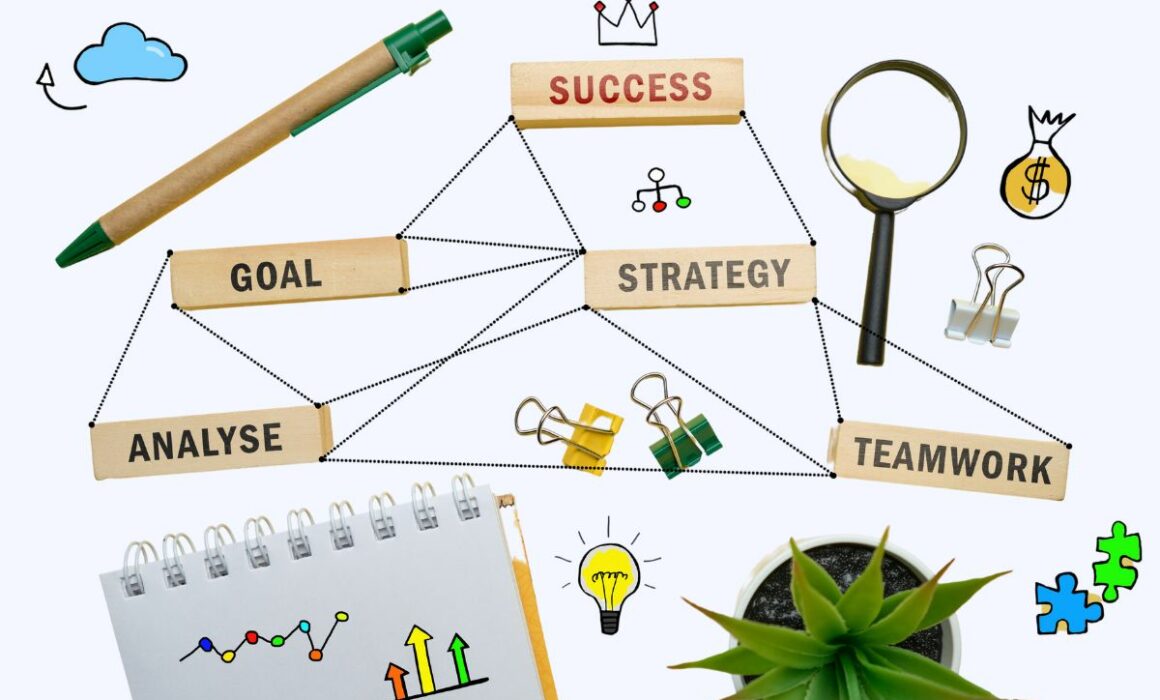11 Top Product Manager Skills You Need To Succeed In 2023
Most jobs have a specific set of responsibilities. Programmers program, marketers market, and salespeople sell. Product managers, however, have a wide range of responsibilities. Therefore, the list of product manager skills you must have would often be overwhelming.
Never mind learning these skills. Figuring out which skills to master in the first place can be troublesome. Even still, the position offers numerous perks if you can take off.
This article will examine the product manager skills you need to succeed in a competitive market. We will also delve into why these skills are crucial to such a position and how you can obtain them. Let’s start with more concrete product management skills.
Table of Contents
- 6 essential hard skills product managers must learn
- 5 essential soft skills product managers must learn
- The bottom line: product manager skills
- Machine Learning In Finance: 12 Essential Applications
- How To Create Interactive Compliance Training For Bank Employees
- How Fintech Apps Are Using Gamification To Increase User Engagement
- Top Gamification Companies for Employee & Customer Engagement
6 essential hard skills product managers must learn
Hard skills can be defined in several ways. They are necessary for job-specific tasks. Others view it as a skill whose proficiency can be measured objectively.
Some think of them as technical skills learned through education.
By that reasoning, the hard skills successful product managers require are as follows:

#1. An understanding of product development
A huge part of product management revolves around product development. That’s why understanding product development can help greatly make you more effective.
It doesn’t necessarily mean you must know how to create or develop a product.
An understanding of the process is often enough. Product development in this context may refer to software development for digital products or manufacturing for physical products.
Why is product development knowledge important?
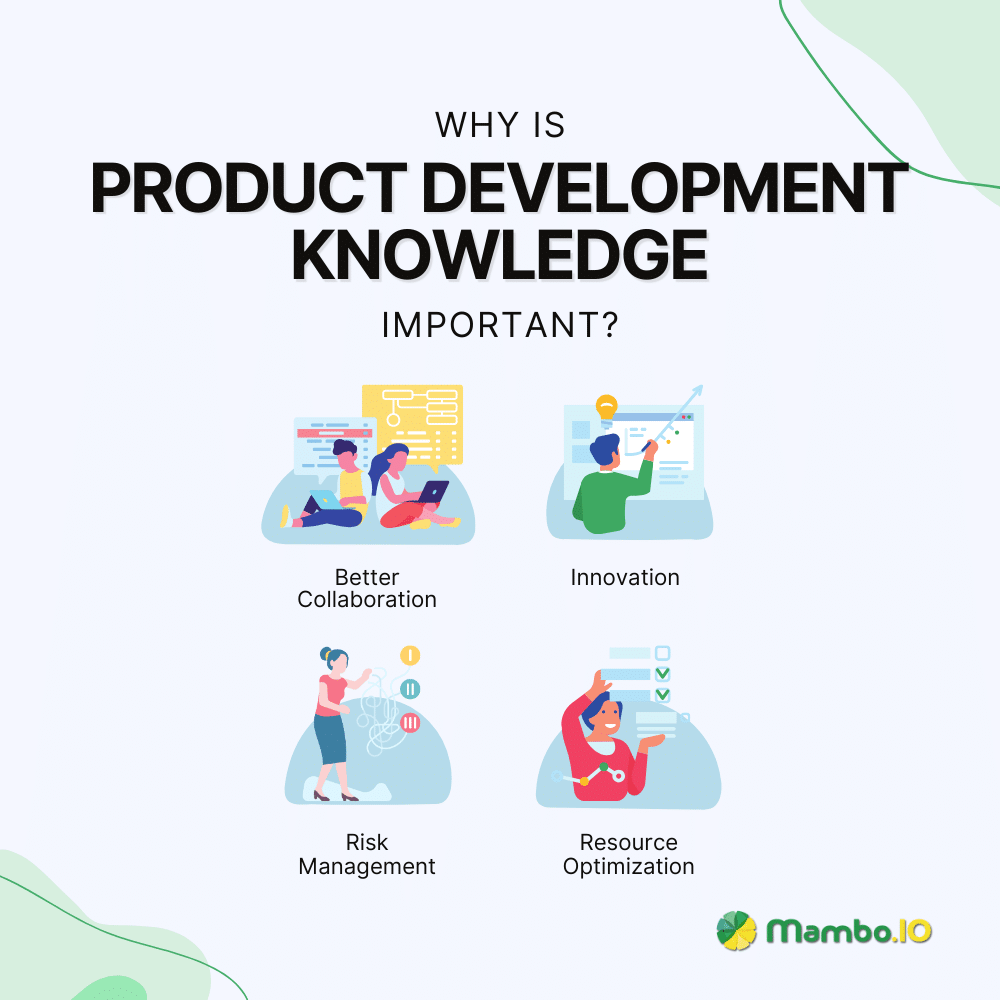
An understanding of the development process provides you with the following advantages:
- Collaboration: You can empathise with the engineering team more easily, making collaboration more seamless. It’s like speaking the same language, after all.
- Innovation: Unique ideas can come to mind regardless of skills or knowledge. However, understanding the product development process makes it easier to think of innovative solutions.
- Risk management: You can quickly pinpoint or identify potential challenges. This then allows you to address such issues or impediments more promptly.
- Resource optimisation: As the product manager, you are partially responsible for assigning resources to each task. By thoroughly understanding the development process, you would know how to use your resources best to meet milestones.
How can you gain an understanding of product development?
You can gain an understanding of the product development process through the following methods:
- Collaborate more closely with the development team.
- Take on temporary roles involved in product development, like QA testing.
- Consult the lead of the development team and seek their mentorship or at least some guidance.
- Attend the appropriate coding classes for the specific development concept you want to master. Beginner-level ones should be adequate to learn the principles.
#2. An understanding of UX/UI design principles
In addition to product engineers, you must also collaborate with the UX/UI designers.
Again, you don’t have to know how to design the user experience aspect of a product. Understanding its principles, concepts, and methodologies is all you need for this skill.
In most cases, an understanding of the following concepts is sufficient:
- User interaction design.
- Visual design (e.g., colour theory, imagery, layout, typography).
- Information/content architecture and organisation.
- User-centred design.
- UX/UI usability testing methods.
Why is UX/UI design knowledge important?

This particular skill enables you to:
- Better collaboration: You can collaborate more seamlessly with UX/UI product designers more easily due to your shared understanding.
- Proactive participation: Understanding UX/UI design principles allows you to become more proactive in projects. For one, you can offer suggestions regarding UX.
- Efficiency: Understanding UX/UI design principles allows you to perform your other tasks more efficiently. For instance, when writing the product requirements document, you will need to include the mockup designs and their explanations.
How can you gain an understanding of UX/UI design principles?
You can gain or enhance your understanding of UX/UI design principles by utilising the following approaches:
- Collaborate more closely with the design team.
- Use and familiarise yourself with UX/UI tools like Figma, InVision, and Sketch.
- Take basic UX/UI design courses.
- Study real-world examples, such as those made by your design team.
#3. Product backlog management
Product backlog management is the most job-specific skill of product managers.
It refers to the practice of managing the product backlog, which may include:
- Adding and removing items from the backlog.
- Organising the items according to their priority or importance.
- Estimating the time and effort the team must put into each item.
- Identifying and managing dependencies for each item.
- Converting each item into a user story.
- Updating the backlog based on changes (e.g., new information, trends, etc.).
Why is product backlog management important?
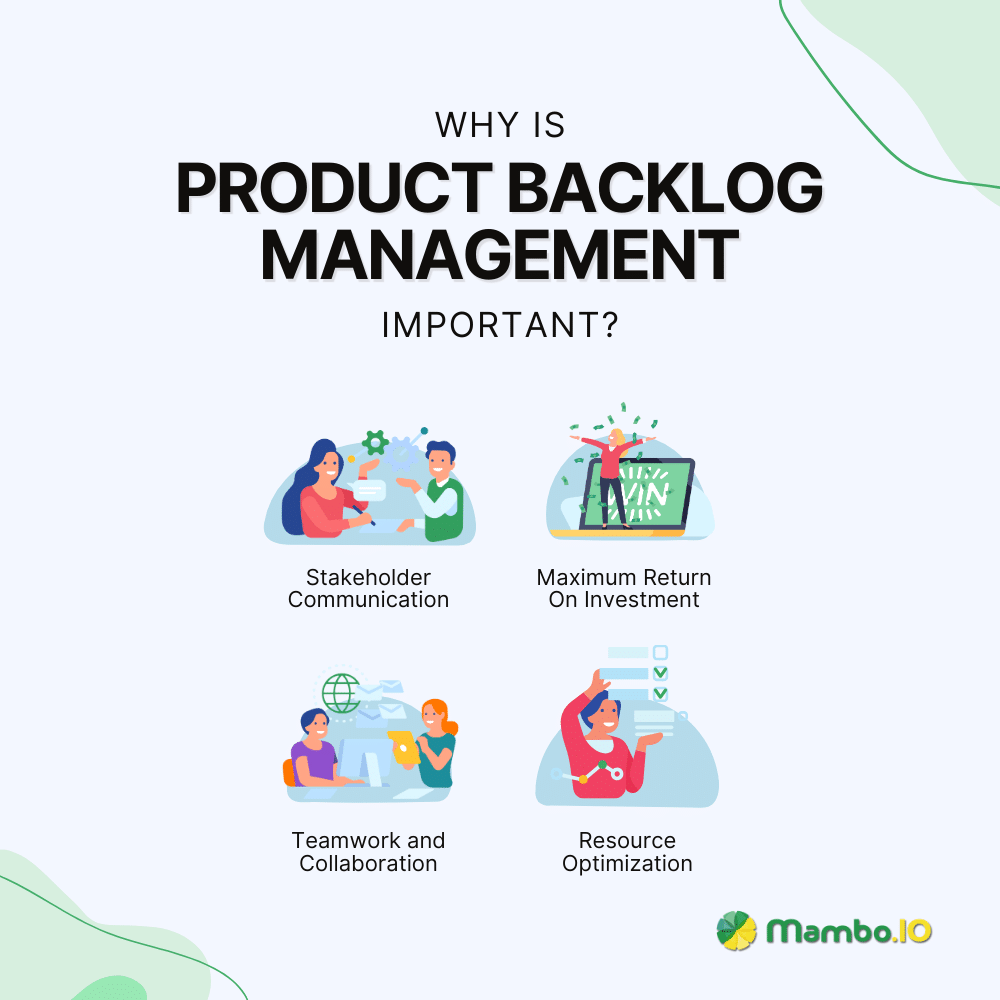
Product backlog management is not just a skill that would be nice to have. It’s a skill you must have. Otherwise, you’d be an ineffective product manager, and for many reasons:
- Stakeholder communication: The product backlog is essential to communicate with stakeholders. It’s what gets them and the employees (e.g., engineers, designers, developers) on the same page.
- Maximise ROI: The product backlog helps the team focus on the important things. It speeds up development, which, in turn, maximises return on investment.
- Teamwork and collaboration: Having a product backlog fosters transparency. This transparency then promotes trust and collaboration among team members.
- Resource optimisation: Backlog management often includes knowing when to get rid of certain items in the backlog. This allows you to save on resources by abandoning user stories that offer little to no benefit to the project.
How can you master product backlog management?
To master product backlog management, consider the following suggestions:
- Attend Agile training and workshops as their methodologies typically offer frameworks for effective product backlog management.
- Look into the different prioritisation frameworks, such as the MoSCoW method, the Kano model, or the value vs. effort analysis.
- Use backlog management tools like Trello and Asana to familiarise yourself with the tools you’ll eventually use.
- Study examples of user stories that can be found on the internet.
#4. Technical writing
Technical writing pertains to writing where you convey information about specialised subjects. In this case, it would refer to your skill in writing technical documents.
In product management, these technical documents may include the following:
- Product vision statement.
- Product roadmap.
- Product requirements document.
- Business case.
The product requirements document (PRD), in particular, is crucial in product development as it contains important information about the project. It outlines the product backlog items, user personas, mockup designs, and acceptance criteria, among many other things.
Why is technical writing important?

Technical writing will come in handy for product managers for the following reasons:
- Compliance: In most industries, the documentation must follow a set of guidelines or standards. You must follow these guidelines to avoid legal trouble.
- Communication: In the case of cross-functional teams and stakeholders, communication typically comes in documents.
- Clarity: Technical writing often also concerns the ability to explain complicated concepts to a non-technical audience. Such a skill is crucial when writing documents like technical reports, release notes, user manuals, and API documentation.
How can you master technical writing?
Many product managers have found success mastering technical writing using the following methods:
- Learn the format from sample documents that can be found on the internet.
- Take online courses on technical writing through platforms like Udemy and edX.
- Create real technical documents to hone your skills.
- Read about the fundamentals of technical writing, such as its sentence structure, style, and grammar, to name a few.
#5. Market research and analysis
One of the main responsibilities of a product manager is conducting market research and analysis. It involves gathering market data and insights to craft an effective strategy.
Market research and technical writing are two skills that go hand in hand. That’s because the market data you gather must typically be presented through documents.
These may include:
- The market needs documents.
- Market research reports.
- Advertising briefs.
- Go-to-market strategies.
- Product comparisons.
- Competitor analysis.
Remember that some of these won’t be written by you alone. They might simply require some input from you, specifically, the data you were able to gather via market analysis.
Why is market research and analysis important?

Market research and analysis is important due to the following:
- Better pricing strategies: Market research often involves information and insights on market demand—a crucial component when creating pricing strategies.
- Product launch timing: It also allows you to understand the market dynamics. This in turn, makes it easier to identify the most advantageous timing for product launch.
- Product backlog creation: Much of the items that would populate the product backlog come from insights gathered through market research.
- Trend monitoring: During the development, trends will arise that may necessitate a change in the backlog. Market research is necessary to identify such trends.
How can you master market research and analysis?
Mastery of market research and analysis doesn’t come easy.
The following methods should at least make it more manageable:
- Join associations American Marketing Association (AMA) specialising in marketing. They most likely offer various learning materials specifically about market research.
- Collaborate closely with the marketing department for hands-on experience.
- Take simple data analytics courses and workshops.
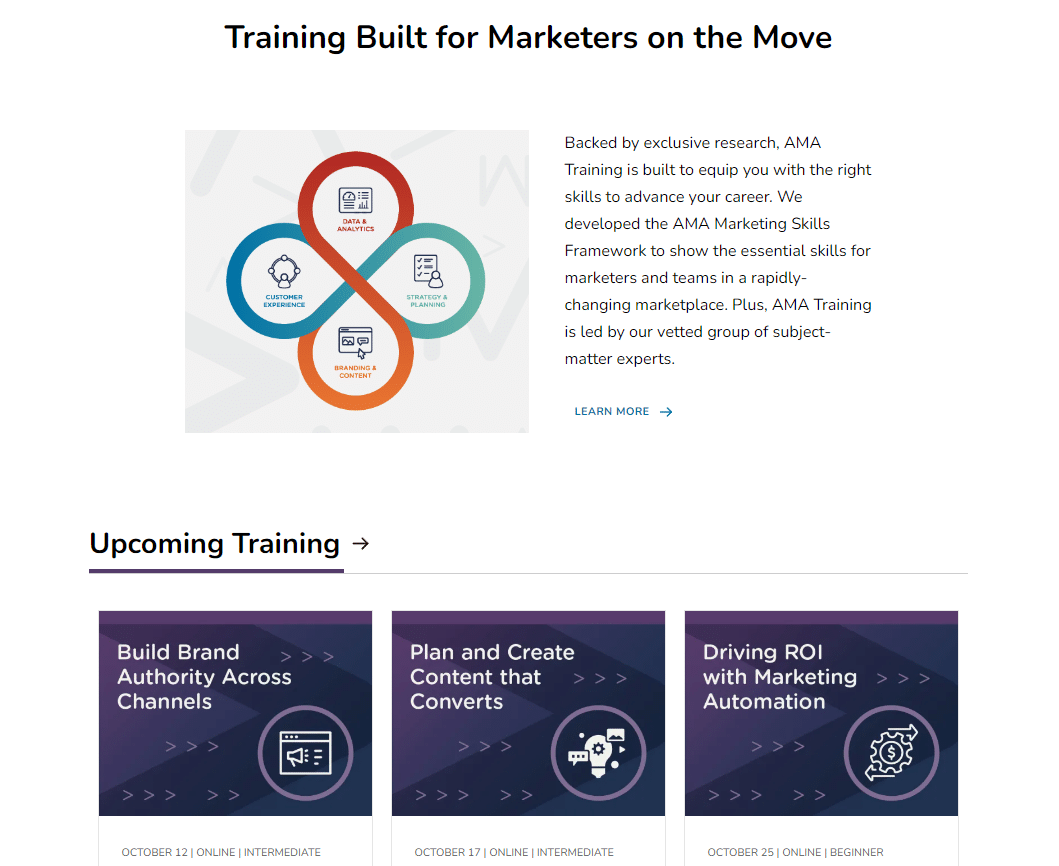
Source: AMA
#6. Familiarity with Agile methodologies
The Agile framework is becoming more prevalent in the product development of many industries. So, it’s in your best interest to learn about it to gain a competitive edge.
That means learning about methodologies or concepts like the following:
- Agile methodologies (e.g., Kanban, Lean, Scrum, extreme programming, etc.)
- Iterative development.
- Scrum meetings (e.g., sprint planning, daily standups, retrospectives, etc.)
- Continuous improvement.
- Customer collaboration.
It would also be beneficial to learn about the product owner role. That’s because, in scrum teams, the product manager usually takes on the product owner role.
Why is Agile expertise important?

Familiarity with Agile and scrum methodologies should help in the following ways:
- Future-proofing: Agile and Scrum offer numerous benefits to product development. It wouldn’t be a surprise if your company transitions to this framework in the future.
- Streamline product development: Agile methodologies can lead to more efficient processes. Backlog management, for one, can become easier with Agile practices.
- Complementary asset: Agile can become the perfect complement to your existing skills. These include skills like customer-centric thinking and time management.
How can you become an Agile expert?
Due to its prevalence, resources about Agile methodologies have become quite accessible.
You’ll find success in mastering this skill through the following methods:
- Apply Agile practices in small projects, then work your way up.
- Attend Agile events, such as user groups, meetups and conferences
- Join the newsletters of sites that post updates on the latest trends in Agile.
- Pursue courses that offer Agile certifications, such as Agile Certified Practitioner (PMI-ACP) and Professional Scrum Master (PSM).
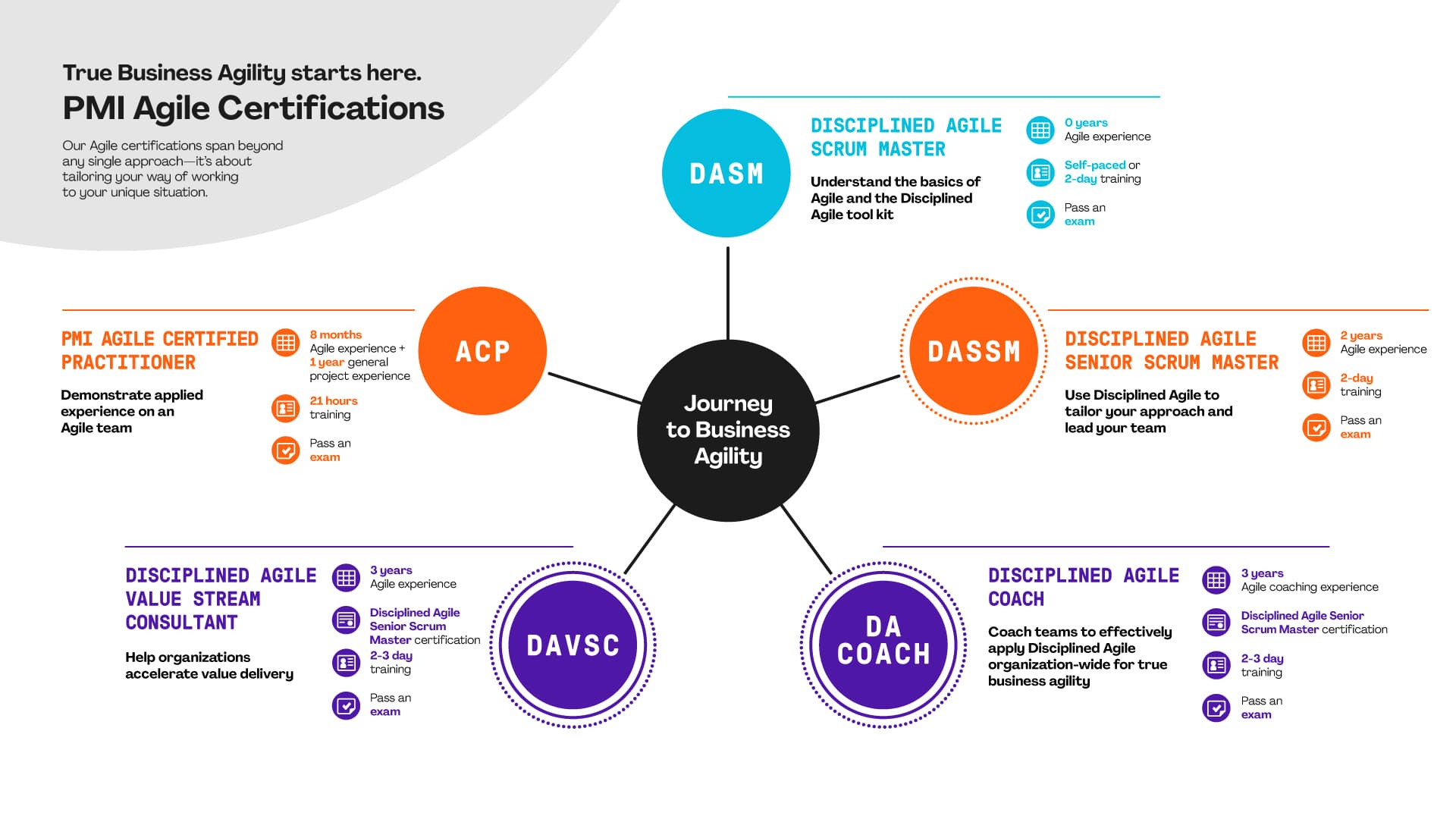
Source: PMI
Even after you’ve acquired these product manager skills, your journey to becoming a successful product manager doesn’t end.
You must practise continuous learning by staying up-to-date with the latest trends. When there’s a new Agile framework, for instance, getting familiar with it is crucial.
In addition, you must also work on your soft skills, also known as people skills.
5 essential soft skills product managers must learn
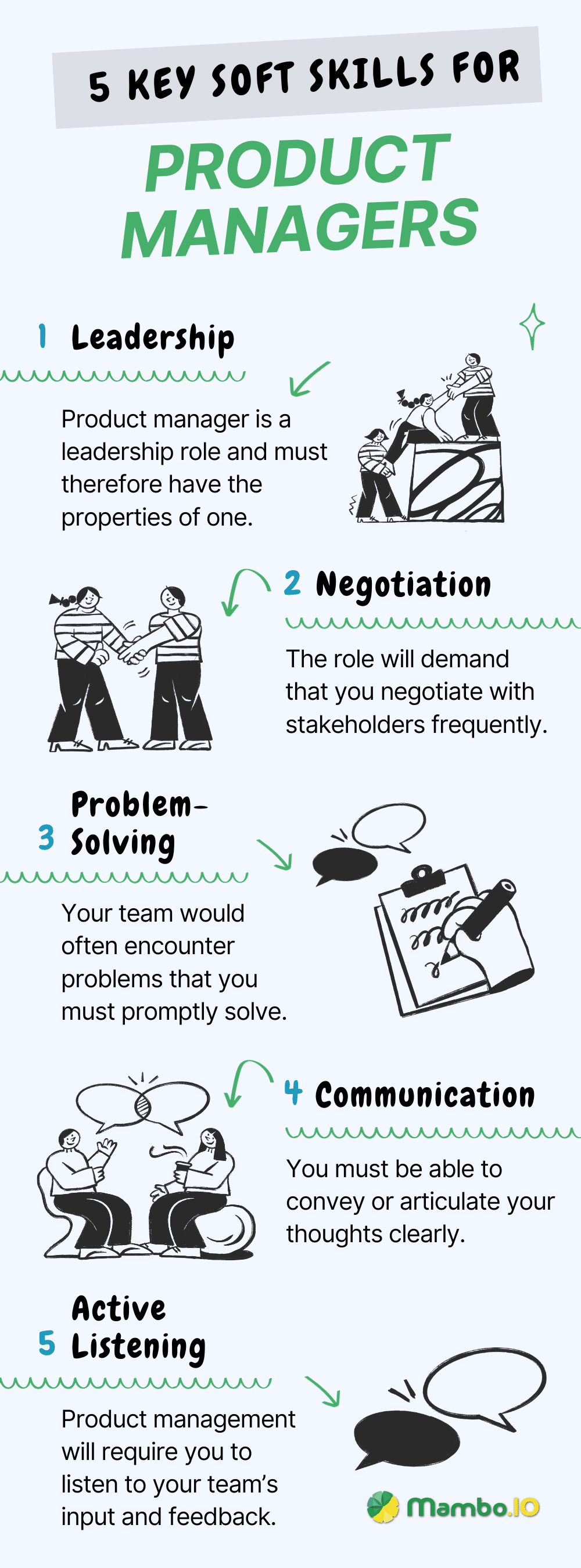
#1. Leadership
The product manager usually holds a leadership role in a team.
As such, you must have the qualities of a leader. Product managers must lead by example, motivate teams, and create a collaborative and productive work environment.
This particular soft skill encompasses numerous other product manager skills, such as:
- Influence.
- Advocacy.
- Decision-making.
- Accountability.
- Ownership.
- Customer focus.
#2. Negotiation
There will be numerous instances where you must negotiate with key stakeholders.
That’s particularly true when the company investors and executives are the stakeholders in question. There are too many, but here are just a few examples of those instances:
- You might have to secure adequate funding or budget for product development.
- You may need to discuss pricing strategies with the marketing or sales teams.
- Stakeholders may request changes to the project scope, which you must address. Sometimes, those changes can be too unreasonable, so you must negotiate.
- In the case of B2B products, you may have to discuss and negotiate the service level agreements and customer contracts.
#3. Problem-solving
Product development can sometimes be unpredictable.
No matter how much you’ve prepared, there will be unforeseen circumstances. Perhaps the budget was suddenly cut. Maybe the schedule had to be moved up by the stakeholders.
The responsibility for addressing these issues often falls on your shoulders.
Times like these call for excellent problem-solving skills.
#4. Communication
A product manager can have all the ideas in the world but fail due to their lack of communication skills. This skill demands that you convey your ideas in a way your team and stakeholders can understand. This can either be verbal or non-verbal.
Communication as one of the product manager skills plays a major role in many ways:
- It allows you to build positive relationships with colleagues and stakeholders.
- It’s essential to leaders as it allows you to articulate your vision and inspire teams.
- When facing customers, effective communication is necessary to address concerns.
- Communication skills encourage innovation as it allows for an exchange of ideas.
#5. Active listening
Similar to communication, active listening also contributes to the success of product managers. Rather than conveying your idea, it revolves around listening to others’ ideas.
Though the roles would be reversed, it still leads to the following advantages:
- You can strengthen your relationships with others through active listening.
- It promotes constructive and open dialogue, which is necessary to resolve conflicts.
- Active listening can foster rapport and trust among team members.
- It minimises the possibility of misunderstandings or misinterpretation.
The bottom line: product manager skills
Skills are not the only thing that makes a product manager. They are, however, one of, if not its most important component. That’s why expanding your skill set is always a good idea, both for existing and aspiring product managers. After all, it helps the team become more efficient. Then again, it’s not the only way to streamline your team processes.
Gamification, in particular, can drastically enhance team engagement. Request a demo now and find out how we can help enhance your team processes with gamification solutions.
Download your free
“Gamification Guide”
Get your PDF now and start transforming your approach to digital engagement!
Latest Posts
Machine Learning In Finance: 12 Essential Applications
The impact of machine learning on finance is significant. Thanks to this technology, financial institutions are now equipped to make efficient decisions. Through the analysis of data sets, machine learning […]
How To Create Interactive Compliance Training For Bank Employees
Banking compliance training isn’t just another task. It’s the stage where everything else performs. Banks must navigate a myriad of regulations and laws. After all, this is a trust-driven, high-stakes […]
How Fintech Apps Are Using Gamification To Increase User Engagement
Discover how gamification in fintech is revolutionizing financial engagement, making banking fun & boosting user loyalty.
